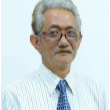International Journal of Information Engineering and Electronic Business (IJIEEB)
IJIEEB Vol. 14, No. 6, 8 Dec. 2022
Cover page and Table of Contents: PDF (size: 528KB)
Redesign Sanjai Chips Packaging Using Kansei Engineering Method
Full Text (PDF, 528KB), PP.37-45
Views: 0 Downloads: 0
Author(s)
Index Terms
Design, Kansei Engineering, Packaging, Sanjai Crackers, Tradisional Minang Food.
Abstract
Sanjai chips made from cassava is typical tradisional Minang food. Packaging design is fundamental because 89% of consumer responses to buying a product are influenced by packaging. Current packaging weakness are plastic packaging is thin, no accompanying brands, and unattractive packaging, so less attractive, greasy, leaks, and make the chips contained in it be destroyed when bought for souvenirs. For this reason, it is necessary to redesign packaging for sanjai chips to increase product protection and influence consumers. Kansei Engineering is a method that deals with the psychological aspects of consumers when interacting with products to obtain a relationship between feelings and product characteristics. Because of that, this method has been chosen. The kansei process begins with a span of semantic space which begins with determining the kansei word. Kansei words were obtained from the distribution of open questionnaires and also based on previous research. After that, the span of the space of properties is determined which is useful for identifying what product properties should be in the design. after that the synthesis, design and evaluation are carried out. Based on the results from the results of the synthesis of span of semantic space and span of the space of properties, it was found that to design Sanjai Chips packaging, the criteria for packaging design are simple, good, informative, unique, and convincing for packaging materials must be non-greasy, made of plastic, good, strong, and convincing, while for other facilities criteria must be flexible.
Cite This Paper
Meylia Vivi Putri, Isdaryanto Iskandar, Andhika, "Redesign Sanjai Chips Packaging Using Kansei Engineering Method", International Journal of Information Engineering and Electronic Business(IJIEEB), Vol.14, No.6, pp. 37-45, 2022. DOI:10.5815/ijieeb.2022.06.04
Reference
[1]D. T. Permadi, N. W. P. Susatyo, and D. Pujotomo, “ENGINEERING.”
[2]H. Quan, S. Li, and J. Hu, “Product innovation design based on deep learning and Kansei engineering,” Appl. Sci., vol. 8, no. 12, pp. 1–17, 2018, doi: 10.3390/app8122397.
[3]I. G. T. Isa, “Kansei Engineering Approach in Software Interface Design,” J. Sci. Innovare, vol. 1, no. 01, pp. 22–26, 2018, doi: 10.33751/jsi.v1i01.680.
[4]M. D. Shieh, Y. Li, and C. C. Yang, “Comparison of multi-objective evolutionary algorithms in hybrid Kansei engineering system for product form design,” Adv. Eng. Informatics, vol. 36, no. February, pp. 31–42, 2018, doi: 10.1016/j.aei.2018.02.002.
[5]H. Gemmy and J. O. Haryanto, “Factors Influence Brand Awareness Towards Purchasing Intention on Susu Kental Manis Frisian Flag,” Int. J. Bus. Stud., vol. 3, no. 2, pp. 40–53, 2019.
[6]N. B. A. Mohamed, I. G. Medina, and Z. G. Romo, “The effect of cosmetics packaging design on consumers’ purchase decisions,” Indian J. Mark., vol. 48, no. 12, pp. 50–61, 2018, doi: 10.17010/ijom/2018/v48/i12/139556.
[7]H. Vyas, “Packaging Design Elements and Users Perception: a context in fashion branding and communication,” J. Appl. Packag. Res., vol. 7, no. 2, p. 5, 2015.
[8]Mu’alim and R. Hidayat, “Re-Desain Kemasan dengan Metode Kansei Engineering,” J. Al-AZHAR Indones. SERI SAINS DAN Teknol., vol. 2, no. 4, p. 215, 2015, doi: 10.36722/sst.v2i4.156.
[9]X. Lai, S. Zhang, N. Mao, J. Liu, and Q. Chen, “Kansei engineering for new energy vehicle exterior design: An internet big data mining approach,” Comput. Ind. Eng., vol. 165, p. 107913, 2022, doi: https://doi.org/10.1016/j.cie.2021.107913.
[10]R. Ginting, A. Ishak, A. Fauzi Malik, and M. R. Satrio, “Integration of kansei engineering and quality function deployment (qfd) for product development : A literature review,” IOP Conf. Ser. Mater. Sci. Eng., vol. 1003, no. 1, 2020, doi: 10.1088/1757-899X/1003/1/012020.
[11]D. P. Restuputri, T. R. Indriani, and I. Masudin, “The effect of logistic service quality on customer satisfaction and loyalty using kansei engineering during the COVID-19 pandemic,” Cogent Bus. Manag., vol. 8, no. 1, 2021, doi: 10.1080/23311975.2021.1906492.
[12]M. Nagamachi, “Kansei engineering: a new ergonomic consumer-oriented technology for product development,” Int. J. Ind. Ergon., vol. 15, no. 1, pp. 3–11, 1995.
[13]E. Coronado, G. Venture, and N. Yamanobe, “Applying Kansei/Affective Engineering Methodologies in the Design of Social and Service Robots: A Systematic Review,” Int. J. Soc. Robot., vol. 13, no. 5, pp. 1161–1171, 2021, doi: 10.1007/s12369-020-00709-x.
[14]A. Hashizume and M. Kurosu, “‘Kansei Engineering’ as an Indigenous Research Field Originated in Japan,” in International Conference on Human-Computer Interaction, 2016, pp. 46–52.
[15]S. Kalantary and J. N. Seraji, “The Concept of Hedonomics and Kansei Engineering Method in Ergonomics: A Narrative Overview,” Int. J. Occup. Hyg., vol. 9, no. 3, pp. 1–8, 2017.
[16]W. M. Wang, J. W. Wang, Z. Li, Z. G. Tian, and E. Tsui, “Multiple affective attribute classification of online customer product reviews: A heuristic deep learning method for supporting Kansei engineering,” Eng. Appl. Artif. Intell., vol. 85, no. May, pp. 33–45, 2019, doi: 10.1016/j.engappai.2019.05.015.
[17]Y.-M. Chang and C.-W. Chen, “Kansei assessment of the constituent elements and the overall interrelations in car steering wheel design,” Int. J. Ind. Ergon., vol. 56, pp. 97–105, 2016.
[18]A. Green and V. Chattaraman, Creating an affective design typology for basketball shoes using kansei engineering methods, vol. 774. Springer International Publishing, 2019.
[19]M. Ziaei, S. Y. Hosseini, H. Shariati, and E. Khoshboo, “Association between occupational burnout and quality of life among healthcare workers,” 2015.
[20]L. Xue, X. Yi, and Y. Zhang, “Research on optimized product image design integrated decision system based on Kansei engineering,” Appl. Sci., vol. 10, no. 4, 2020, doi: 10.3390/app10041198.
[21]M. Hartono, “The modified Kansei Engineering-based application for sustainable service design,” Int. J. Ind. Ergon., vol. 79, no. January 2019, p. 102985, 2020, doi: 10.1016/j.ergon.2020.102985.
[22]Y. H. Hsiao, M. C. Chen, and W. C. Liao, “Logistics service design for cross-border E-commerce using Kansei engineering with text-mining-based online content analysis,” Telemat. Informatics, vol. 34, no. 4, pp. 284–302, 2017, doi: 10.1016/j.tele.2016.08.002.
[23]Q. Fu, J. Lv, S. Tang, and Q. Xie, “Optimal design of virtual reality visualization interface based on kansei engineering image space research,” Symmetry (Basel)., vol. 12, no. 10, pp. 1–22, 2020, doi: 10.3390/sym12101722.
[24]M. Nagamachi, “History of Kansei engineering and application of artificial intelligence,” Adv. Intell. Syst. Comput., vol. 585, pp. 357–368, 2018, doi: 10.1007/978-3-319-60495-4_38.
[25]C. E. Osgood, W. H. May, M. S. Miron, and M. S. Miron, Cross-cultural universals of affective meaning, vol. 1. University of Illinois Press, 1975.
[26]S. Schütte, “Engineering emotional values in product design: Kansei engineering in development.” Institutionen för konstruktions-och produktionsteknik, 2005.
[27]N. Rahmayani, Yuniar, and A. Desrianty, “Rancangan Kemasan Bedak Tabur (Loose Powder) Dengan Menggunakan Metode Kansei Engineering,” J. Online Inst. Teknol. Nas., vol. 03, no. 04, pp. 170–179, 2015.
[28]D. Faisal, L. D. Fathimahhayati, and F. D. Sitania, “Penerapan Metode Kansei Engineering Sebagai Upaya Perancangan ulang Kemasan Takoyaki ( Studi Kasus : Takoyakiku Samarinda ),” J. TEKNO (Civil Engineeering, Elektr. Engineeering Ind. Engineeering), vol. 18, no. April, pp. 92–109, 2021.
[29]S. Nugroho, D. Pujotom, and M. M. Ulkhaq, “Redesain Kemasan Makanan Ringan Olahan,” Performa, vol. 16, no. 1, pp. 77–86, 2017.
[30]M. Sari, “Desain ulang kemasan rendang menggunakan metode kansei engineering,” Universitas Andalas, 2018.


